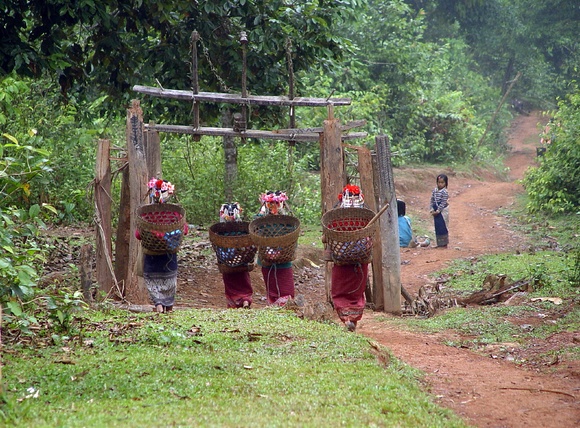 Thanks to Green Shinto reader, Daniel Oshima, for bringing to our attention the religion of the Akha people who originated from the western part of China (probably Yunnan) but have migrated to Thailand and Burma in recent times. According to Wikipedia, their religion called zahv “is often described as a mixture of animism and ancestor worship that emphasizes the Akha connection with the land and their place in the natural world and cycles.”
Thanks to Green Shinto reader, Daniel Oshima, for bringing to our attention the religion of the Akha people who originated from the western part of China (probably Yunnan) but have migrated to Thailand and Burma in recent times. According to Wikipedia, their religion called zahv “is often described as a mixture of animism and ancestor worship that emphasizes the Akha connection with the land and their place in the natural world and cycles.”
Akhas believe that spirits and people were born of the same mother and lived together until a quarrel led to their separation, upon which spirits went into the forest and people remained in the villages. Since then, Akha believe that the evil spirits have caused illness and other unwelcome disruptions. They use spirit gates to keep them out.
The Akha spirit-gates are the equivalent of Japanese torii. Carved birds enable flight to the gods so that messages can be delivered (presumably in times of emergency, or in thanks for being spared disaster). This recalls the origin of torii as ‘bird’s roosts’ (tori-i). Human figures are carved on the gate, which signify vitality and fertility. (Coupling and sex are indicators of the life-force, which overcome decay and the destructive.)
Other similarities have to do with the renewal of the gates each year, for refreshing is such an important part of Shinto also. (Rebirth is built into the annual cycle, and as a nature religion the lesson is taken to heart.) Moreover, purity of the spirit world and the pollution inherent in the material world are a vital part of animist thinking, and in Akha terms the gates represent purity in defiance of the evil spirits outside. Human touch despoils the gates, which can only be restored to purity by proper ritual and sacrifice.

Leave a Reply